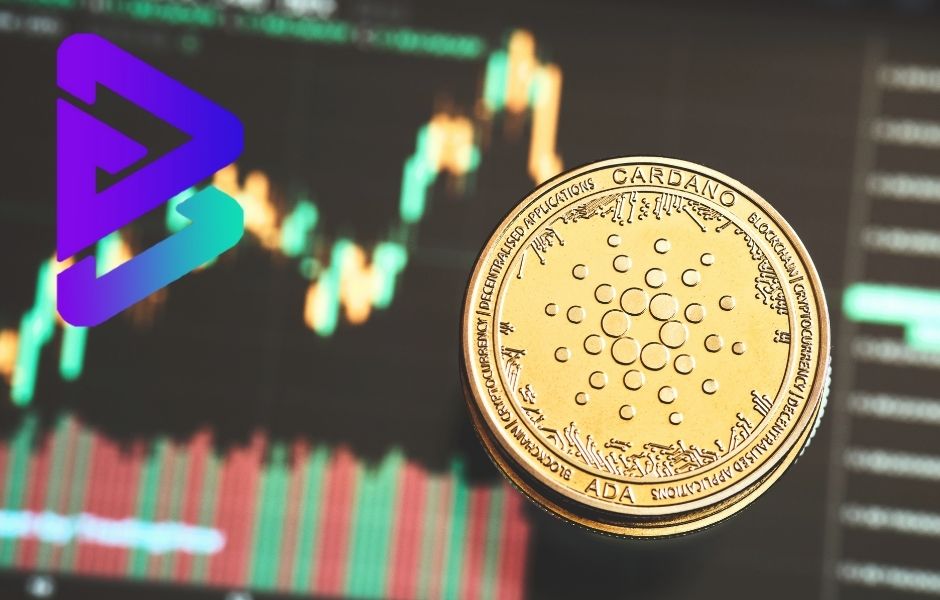Top 7 Ways To Achieve Capital Efficiency Through DeFi Automation
Capital efficiency in decentralized finance (DeFi) refers to the ability to maximize the utilization and productivity of capital within a decentralized financial ecosystem. It involves optimizing the deployment of assets to generate the highest possible returns while minimizing inefficiencies, costs, and idle capital.
Key components and considerations related to capital efficiency in DeFi include:
- Leverage and Collateralization:
- DeFi platforms often allow users to leverage their assets by borrowing against them. Efficient use of leverage can amplify returns, but it requires careful consideration of collateral requirements and risk management to avoid liquidation.
- Yield Farming and Liquidity Mining:
- Yield farming involves providing liquidity to decentralized exchanges (DEXs) or lending protocols in exchange for rewards or fees. Capital efficiency is achieved by identifying opportunities with the best yield and optimizing the allocation of assets across different liquidity pools.
- Optimizing Trading Strategies:
- Traders in DeFi can optimize their capital efficiency by employing efficient trading strategies. This may include using decentralized exchanges with lower slippage, considering automated market makers (AMMs), and minimizing transaction costs.
- Flash Loans:
- Flash loans are a unique feature in some DeFi platforms that allow users to borrow assets without providing collateral, provided the borrowed amount is repaid within the same transaction. Capital efficiency can be improved by utilizing flash loans for arbitrage opportunities and other strategies.
- Automated Portfolio Management:
- DeFi platforms often offer decentralized applications (dApps) or protocols that automate portfolio management. These tools can rebalance portfolios, switch between different yield-generating strategies, and optimize capital allocation based on market conditions.
- Interest Rate Optimization:
- DeFi lending and borrowing protocols provide interest-bearing opportunities for users. Capital efficiency involves selecting lending and borrowing platforms with competitive interest rates and efficiently deploying assets to maximize overall returns.
- Capital Recycling:
- Efficient DeFi strategies may involve recycling capital across different protocols or opportunities. For example, users may borrow assets on one platform, lend them on another to earn interest, and then reinvest the proceeds in other yield-generating activities.
- Gas Fee Management:
- Gas fees, or transaction fees on blockchain networks, can impact capital efficiency. Traders and users need to optimize their transactions to minimize gas costs and enhance the overall efficiency of their capital deployment.
- Risk Management:
- Effective risk management is crucial for capital efficiency. This involves assessing and mitigating the various risks associated with DeFi activities, including smart contract vulnerabilities, market volatility, and counterparty risks.
Capital efficiency is a central concept in DeFi, where users seek to maximize returns on their invested capital while navigating the decentralized and dynamic nature of blockchain-based financial platforms. It requires a combination of strategic decision-making, risk management, and the utilization of innovative DeFi tools and protocols.
Also, read- The Role Of Crypto Payment Gateways In Decentralized Finance (DeFi)
Unveiling Capital Efficiency through DeFi Automation

DeFi (Decentralized Finance) automation plays a pivotal role in enhancing capital efficiency within the decentralized ecosystem. In this exploration, we delve into the mechanisms through which DeFi automation optimizes capital utilization, fostering a more efficient and dynamic financial landscape.
1. Automated Yield Farming Strategies
DeFi platforms leverage automated yield farming strategies to maximize returns on deposited assets. These strategies involve smart contracts executing complex transactions across various liquidity pools, seeking the most lucrative opportunities in real-time. By automating these processes, users can efficiently allocate their capital to earn optimal yields without constant manual intervention.
2. Flash Loans for Instant Capital Deployment
Flash loans, a unique feature in DeFi, enable users to borrow and repay funds within a single transaction, provided the borrowed amount is returned within the same transaction block. This swift and automated borrowing mechanism allows for instant capital deployment in trading or arbitrage opportunities, significantly improving capital efficiency by minimizing idle funds.
3. Automated Market Making (AMM) Protocols
AMM protocols, such as those used in decentralized exchanges (DEXs), automate the process of market-making. These protocols utilize algorithmic formulas to determine asset prices and execute trades. By automating market-making, liquidity providers can efficiently allocate their capital across different pools, contributing to continuous liquidity and reducing impermanent loss.
4. Leveraging Algorithmic Trading Strategies
DeFi automation extends to algorithmic trading strategies, where predefined rules guide the execution of trades based on market conditions. These strategies, implemented through smart contracts, optimize capital allocation by responding dynamically to price movements, executing trades at the most opportune moments, and mitigating the impact of market fluctuations.
5. Liquidity Pool Optimization
Automated tools analyze various liquidity pools, assessing factors such as yields, risks, and fees. By dynamically reallocating assets based on these analyses, DeFi users can optimize their exposure to different pools, ensuring capital is deployed where it can generate the highest returns while managing associated risks effectively.
6. Governance Token Staking and Voting Automation
Capital efficiency is not limited to yield generation; it also extends to governance participation. DeFi platforms often involve users in decision-making through governance tokens. Automated systems can stake these tokens and participate in voting processes on behalf of users, allowing for continuous engagement without manual oversight.
7. Collateral Management and Borrowing Automation
DeFi automation extends to collateral management and borrowing activities. Smart contracts automate the evaluation of collateral values, adjusting borrowing limits based on market conditions. This ensures efficient use of capital by allowing users to borrow against their assets while maintaining collateralization ratios within predefined thresholds.
Secure your exclusive access to the #ZKLtoken Community Sale by joining the whitelist today!
🔐 LIMITED spots
🔐 Don’t miss this priority gateway to the future of decentralized finance with aggregated liquidity.
Sign up below 👇https://t.co/PNeipguQeJ
⌛️Time is of the essence… pic.twitter.com/3rzXVs40on— zkLink (@zkLink_Official) January 12, 2024

Conclusion
DeFi automation emerges as a cornerstone of capital efficiency, revolutionizing how assets are utilized within decentralized ecosystems. From yield farming and flash loans to algorithmic trading and liquidity pool optimization, the automated processes embedded in DeFi protocols empower users to maximize returns and actively manage their capital without constant manual intervention. As DeFi continues to evolve, its automated features are poised to further refine and redefine capital efficiency in the decentralized financial landscape.
Stay informed with daily updates from Blockchain Magazine on Google News. Click here to follow us and mark as favorite: [Blockchain Magazine on Google News].
Get Blockchain Insights In Inbox
Stay ahead of the curve with expert analysis and market updates.
latest from tech
Disclaimer: Any post shared by a third-party agency are sponsored and Blockchain Magazine has no views on any such posts. The views and opinions expressed in this post are those of the clients and do not necessarily reflect the official policy or position of Blockchain Magazine. The information provided in this post is for informational purposes only and should not be considered as financial, investment, or professional advice. Blockchain Magazine does not endorse or promote any specific products, services, or companies mentioned in this posts. Readers are encouraged to conduct their own research and consult with a qualified professional before making any financial decisions.

 Bitcoin
Bitcoin  Ethereum
Ethereum  Tether
Tether  XRP
XRP  Solana
Solana  Dogecoin
Dogecoin  USDC
USDC  Cardano
Cardano  Lido Staked Ether
Lido Staked Ether  TRON
TRON  Avalanche
Avalanche  Chainlink
Chainlink  Toncoin
Toncoin  Wrapped stETH
Wrapped stETH  Wrapped Bitcoin
Wrapped Bitcoin  Shiba Inu
Shiba Inu  Sui
Sui  Stellar
Stellar  Polkadot
Polkadot  Hedera
Hedera  Hyperliquid
Hyperliquid  WETH
WETH  Bitcoin Cash
Bitcoin Cash  LEO Token
LEO Token  Uniswap
Uniswap  Litecoin
Litecoin  Pepe
Pepe  Wrapped eETH
Wrapped eETH  NEAR Protocol
NEAR Protocol  Ethena USDe
Ethena USDe  USDS
USDS  Aptos
Aptos  Aave
Aave  Internet Computer
Internet Computer  Cronos
Cronos  POL (ex-MATIC)
POL (ex-MATIC)  Mantle
Mantle  Ethereum Classic
Ethereum Classic  Render
Render  WhiteBIT Coin
WhiteBIT Coin  Monero
Monero  MANTRA
MANTRA  Dai
Dai  Bittensor
Bittensor  Artificial Superintelligence Alliance
Artificial Superintelligence Alliance  Arbitrum
Arbitrum  Ethena
Ethena 
 The concept of capital efficiency in decentralized finance (DeFi) is often measured using different metrics, and there isn’t a specific standardized formula for calculating capital efficiency. However, certain ratios and metrics are commonly used to assess capital efficiency in DeFi protocols. Here are a few key metrics that may be relevant:
The concept of capital efficiency in decentralized finance (DeFi) is often measured using different metrics, and there isn’t a specific standardized formula for calculating capital efficiency. However, certain ratios and metrics are commonly used to assess capital efficiency in DeFi protocols. Here are a few key metrics that may be relevant:


